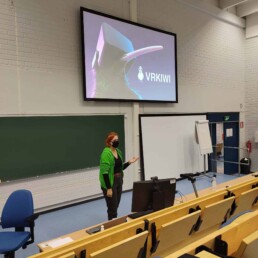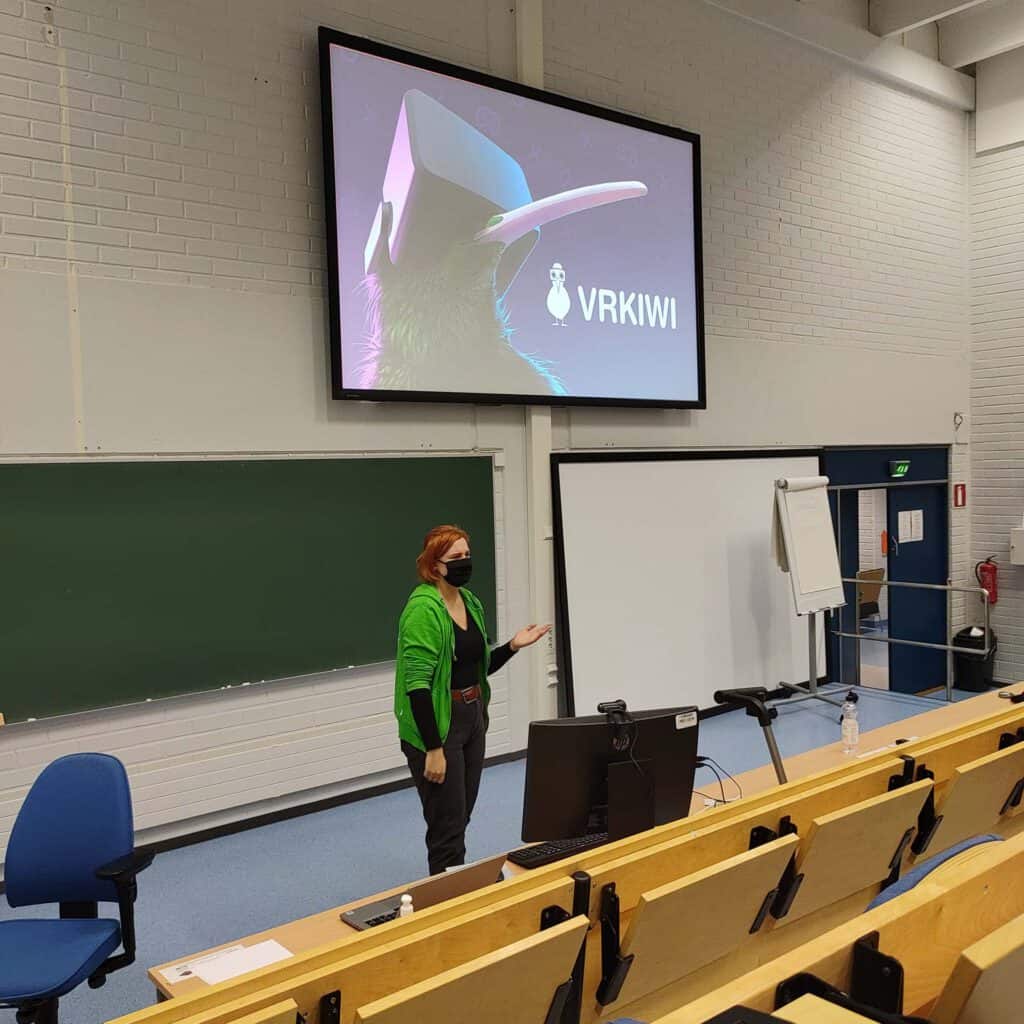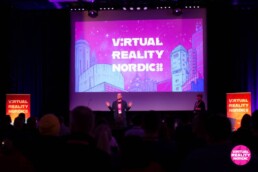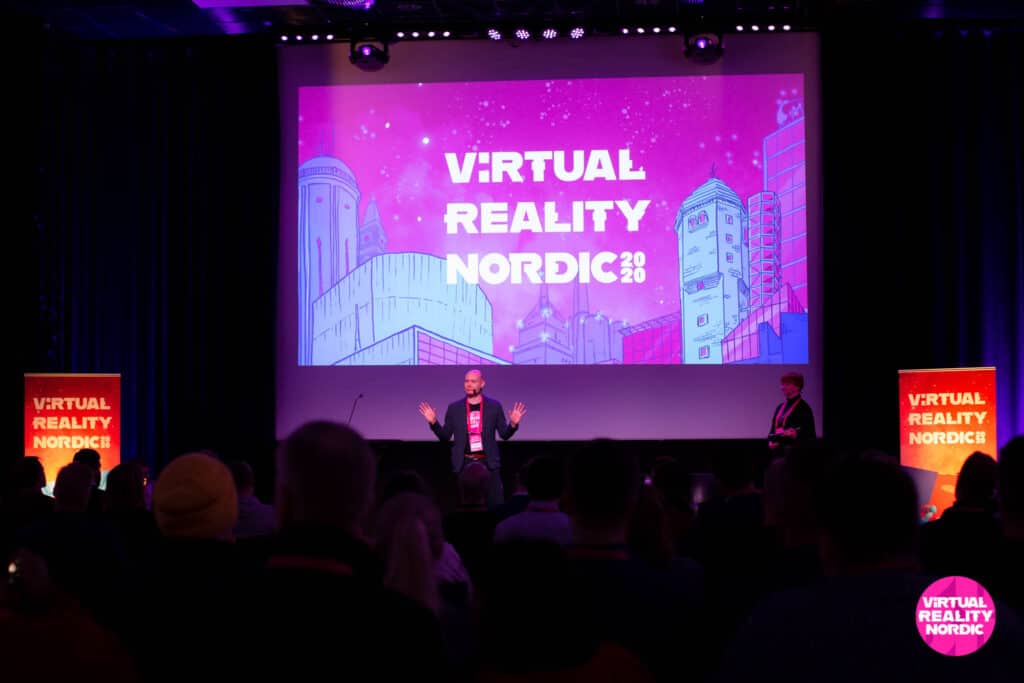5 Things You Didn’t Know Were Gamified
Gamification is rather a new concept that carries great importance in almost every field today. Especially in marketing strategies, gamification is one of the preferred ways to capture the attention of the audience.
Gamification consists of gaming elements integrated into a non-gaming environment. The reason for this incorporation is to increase the engagement level of the users. If you are wondering about these gaming elements, you can read our previous blog post about the topic here.
In this blog, we present the top 5 examples of gamification that you might not have thought about before. The examples will be categorized according to their level and how fast you can spot the gamification strategies used. Let’s start with an easy one!
Easy
Duolingo
Learning a new language might be an interest for many people at some point. One of the easiest ways to start learning a new language is online learning software because everyone can have access to them easily and they are mostly free! Therefore, the first example comes from one of the most popular language learning apps out there: Duolingo.
And, how does Duolingo use the game elements? Here are all the obvious gamified features that are used which makes it an easily distinguished example:
-
- It uses a level system: The lessons are divided into different levels and titles. The user can go to the next level only when the previous ones are completed or they can be skipped if the user is showing good performance on the level. At each level, there are no extreme differences in the difficulty level. There are 3 or 4 new words or phrases introduced in each level. Thus, the competency is neither too easy nor too difficult which can keep the motivation of the user at an optimal level.
- Reward system: In this specific software, users can collect rewards after completing a lesson. Opening a treasure chest can help users to collect in-app gems and some potions for x2 XP. These gems can buy the “streak freezers”, and “extra lives” in the app. This is a great example of engaging the user with the platform.
- Collecting badges: The user becomes more engaged and motivated to use the app more with the rewards, and that helps them to complete more lessons. After completing the lessons, the user can collect badges. Also, the earned badges are shown in the public profile of users. That is an excellent motivation source! Moreover, the app works to build a community by telling the users how many people are learning the same language at the same time. These sentences motivate the user and increase the community feeling.
- Streak: Showing the streak to the user and counting the consecutive days the app has been used is a great way to encourage them to continue using the app. When the user comes to the streak milestone, the software gives rewards such as giving a free trial of the premium version of the game for a couple of days. Also, the app gives some statistical information about the users who played regularly. For example, “Users who complete XX days in a streak are XX% more likely to complete the course!” These types of sentences are a great source of encouragement for the users.
Duolingo is a great example of gamification because of all the elements that are listed above. These elements keep the user encouraged, engaged and motivated. This way, users can learn in a fun way, and keep coming back to use the app!
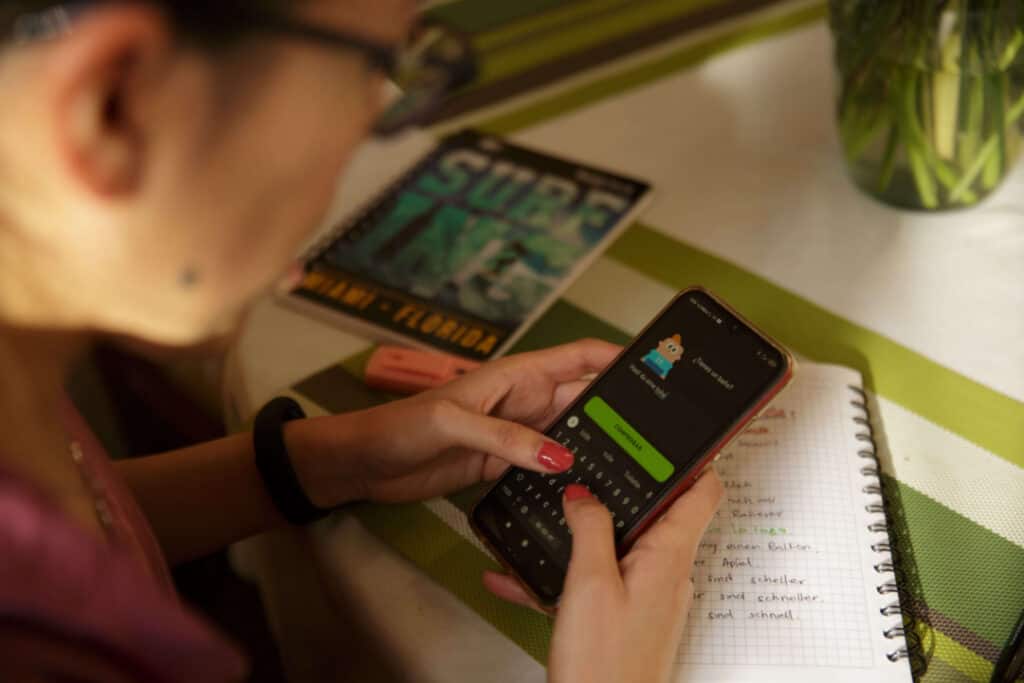
Medium
Have you ever collected some in-app points to get some reward such as a free product? Or collected mile points to get a discount on your next flight on your most preferred airline? If your answer is yes, you already have experienced and used this level of gamified application! Medium-level gamified applications can be distinguished by some less obvious features. For example, using fidelity points or cards and loyalty points. Here are 2 examples in this matter:
Yelp
Yelp is a software that can be used via its website or apps. The main purpose of the app is to leave reviews, ratings, and photos of the businesses that the users visit. Also, there is a friends list in this app like Facebook. So, what kind of gamification elements do this app use?
-
- Elite status: Who would not like to feel special? Yelp gives this special feeling to its users! If they give frequent reviews, answer questions, and participate in the Yelp community they can have elite status. As it can be seen, this can keep users more active in the app.
Starbucks
Starbucks is also using a Reward app to keep customers purchasing their products. This app is an excellent example of gamification used in real life.
-
- Collecting stars: The user accumulates stars with every product they purchase in this app. Also, the graphical design makes it fun; the stars look like cups and you can fill the cups! The more purchases are made, the more benefits the user earns. These benefits can be a birthday gift or an extra cup of coffee. Who would not like to have these fun and diverse benefits while sipping on their favorite coffee?

Hard
In the following cases, the game elements are more subtle and difficult to find. Therefore, you may have not noticed these great examples of gamification!
Linkedin profiles
When signing up for LinkedIn, the steps that the user should follow to complete the profile are given in the beginning. LinkedIn is a platform to reach out to more people and widen the network to find more job opportunities. Therefore, LinkedIn shows a progress bar in the beginning as you are setting your profile. The more your progress bar is full, the easier it is to reach more people. This is a smart gamified application.
Tinder is also using the same method to make its users complete their profiles. So, if you want to reach more people outside of working hours, you can try Tinder and see its gamification!
Nike+ Run Club
Through the power of community, Nike+ Run Club is connecting people. Nike increases user retention by providing the opportunity to create a supportive community. Users can have this community by comparing the steps taken and distances run with other users of the app. This competitive feeling helps people to connect to other users and be more motivated. This is an excellent example of gamification because, with this app, users can customize their training program, and complete the challenges to win badges and trophies.
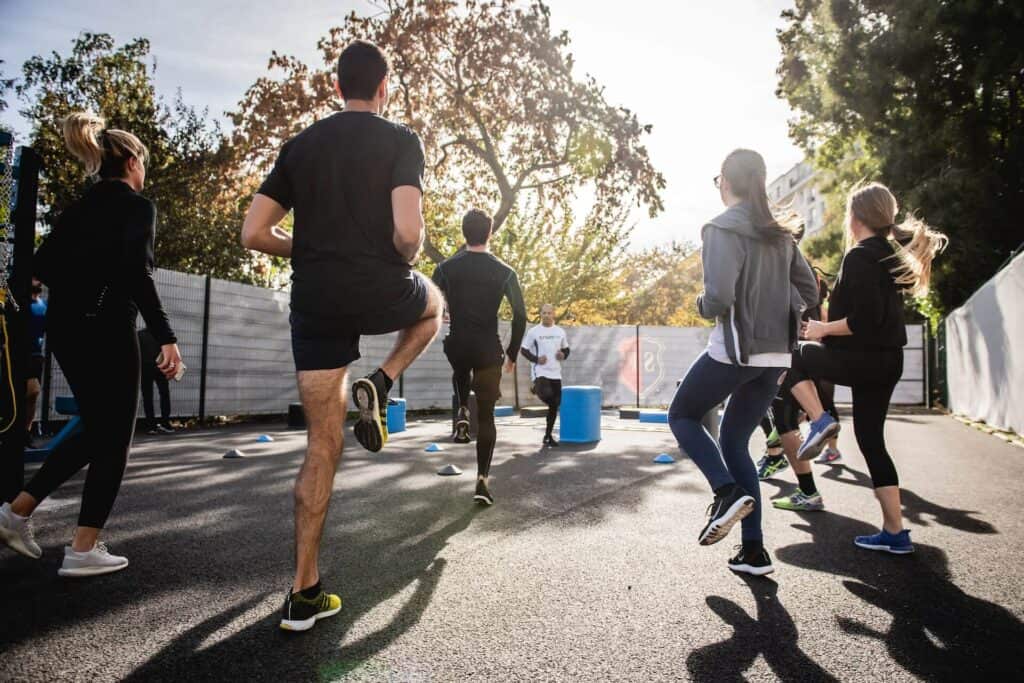
Honorable Mention
Finally, as an honorable mention, we would like to present an amazing real-life gamification example. Gamification does not have to be only in the digital world. Moreover, just because it includes game elements, it also does not mean gamification or games are only for younger people. Here, we can also highlight the fact that playfulness is a major factor in games in general as it can be seen in this specific example. Therefore, anything gamified should be fun, and the fun can come from even only being playful! The initial aim was to encourage people to use the stairs instead of the escalator to fight obesity. The research shows that after the stairs were turned into piano keys, people preferred stairs to escalators!
Why use gamification?
In our previous post, we have explained the gamification concept. The post can be read here. However, let’s quickly reintroduce what is gamification. In short, gamification is the application of elements of game playing to different areas of activity. This is usually seen as an online marketing technique to engage with a service or a product. However, it is essential to remember that gamification is not the game itself but the use of game elements in non-gaming functions and circumstances. Especially in the last decade, gamification has become a hot topic both in education and in business. With this blog, we aim to delve into the gamification concept.
Why using gamification?
The fact that traditional motivational elements, such as curiosity and adding personal challenge, are no longer valid in today’s world is emphasized in business and personal development books. This is also proven by scientific research. Gamification of any element creates an internal trigger by changing the perception of the feature, making it more attractive. The point that definitely should be highlighted about gamification as a concept is that the majority of people play games just because they want to play. Thus, people play games of their own free will, and especially the younger generation spends time on games equal to their weekly working hours. Therefore, to grab the attention of your customers or your students, it is crucial to gamify the elements of the topic concerned.
The concept of gamification became popular as the growing game industry showed that games have a powerful effect on human motivation. Before this concept officially emerged, some workplaces already used practices with game mechanics: for example, choosing the best employee of the month to keep the employees engaged and motivated. Therefore, adding game elements to introduce competition is a great use of gamification in business. Moreover, this concept is highly useful for educational purposes and research shows that it has a positive impact on learners’ motivation and engagement.
Which gamification elements can you add to your apps & learning environment?
Gamification is a popular keyword, especially in the education sector. Moreover, learning apps as learning environments are very popular. You might then be wondering what types of game elements you should include in your apps and learning environment. We would like to answer this question with the following list of elements:
- Level, points, scores
- Progress bars
- Rewards and badges
- Storylines
- Countdowns and schedule
- Personalization
- Leaderboards
- In-app tools
- Micro-interactions
All the elements listed above are aiming to increase competitiveness and keep the users motivated and engaged with the product. Therefore, if gamification is included, the possibility of users’ keep coming back and using the app is more likely than ever. Moreover, gamification and game elements can be included in everything that can be thought of. The researches also show that gamified training in workplaces keeps the employees engaged and reduces boredom during training. It is very important to realise what is popular and preferred by the users, especially these days. Therefore, including the best-known game elements in the apps and learning environment would give you a great advantage.
Best practices for retaining users with game elements
As it was mentioned previously, the main reason for gamification is to keep the users retained, engaged, and motivated. There are some specific gamified solutions and practices that increase user engagement.
Let’s get into the details! Here’s a list of 4 practical examples:
- Tutorial: Tutorials teach the user how the game works, making it easier to engage with. However, it is important to not make the tutorial too long, complicated, or too simple. By tracking whether a user skips certain parts of the tutorial, you can get an estimate for the right tutorial features.
- Reward: Adding daily rewards will keep the user coming back to the app every day to collect them. Moreover, giving rewards after an achievement also motivates and encourages the user to keep coming back to the app.
- Notifications: Using push notifications is again encouraging the user to keep using the app or the game.
- Providing the chance to have a community: for example, setting options such as “invite a friend” or “ask a friend to send a heart” creates a sense of companionship or competition. When the users feel like they have a virtual community on the app, it will help them use the app instead of dropping out.
These practices are all part of the traditional gamification approach. However, it is worth mentioning that trends and circumstances rapidly evolve and change. Nowadays, many apps look for different ways to increase retention because users usually avoid push notifications. Moreover, inviting friends through Facebook is also seen as a fading trend. Therefore, even though these practices are considered some of the best to retain users, it is important to keep a dynamic approach and check what solutions users themselves are gravitating towards.
The advantages of implementing gamified solutions
Gamification has become very popular in the last decade because it has a lot of advantages. Moreover, there are so many benefits of why gamification is worth using in learning apps or solutions. The statistics from the research also prove that when gamification is used learning is more effective. Here are the best advantages of implementing gamified elements, especially for e-learning solutions:
- Increases the engagement
- Improves the motivation of the users
- Helps and improves retaining knowledge
- Elevates cognitive development
- Helps education to become more accessible
You may have more questions about gamification, and you can contact MeKiwi to have your answers! As MeKiwi, we are providing services to build custom-made gamified solutions to your needs in the business and education fields. Do you want to make your product digitally engaging and motivating? Let us do it for you!
Do not hesitate to contact us for more information and the best digital gamified solutions.
Interview with Riikka Kilpeläinen, MeKiwi AR/VR Project Manager - How Riikka chose a career in technology
On 12th of October we celebrated Ada Lovelace, known as the first computer programmer, and all the achievements of women in science, technology, engineering and mathematics. We had a chat with our AR/VR project manager Riikka Kilpeläinen for the occasion.
Tell us something about yourself?
I'm a project manager at our B2B department, so I handle our VR/AR/gamified projects at MeKiwi. When I'm not doing project management, I'm most likely doing Unity programming. I'm also involved in VRKiwi's porting and publishing side. I've been working at the company since late 2020 and I did my internship here as a VR Unity programmer
What led you to this field?
I've played games as long as I can remember (like many people who work on games) and even if game development, or even software development wasn't my first career choice, I've always been interested in computers. When I was studying fashion, I was really interested in computer graphics and drafting patterns digitally and such. So it was really a no-brainer, that if I decide to switch my plans for the future I'd end up in software development. Eventually I got into an university of applied sciences that had a degree in game development, and the rest is history. I like everything (okay, most things) about game development, production, art, programming, publishing, marketing, and I have to say I love the process behind the making more than anything. So as long as I can make some sort of interactive, possibly game-ish software, I'm happy.
What are the challenges you face/faced?
Feeling a bit lost at times, for sure. When everything seems exciting and something you'd like to learn more about and try out, it can be hard to know what's really your thing. I've had to accept that being a generalist is also a position that needs to be filled in many companies, and it's especially useful to know a bit about every area of game development as a project manager.
What’s the coolest project you worked on?
This is a hard one, since every project has its ups and downs and all of them have something cool that's completely unique to the project. But I'll have to say my favorites are always the ones where we overcome some obstacle together with the customer. Since our customers are usually not game developers themselves, they'll have a completely different skillset and I get to learn something completely new about a different industry. Which might not help me with my generalist "problem", I get really excited about whatever industry we're working with and I'd like to indulge myself in that for a while!
Outside my work at MeKiwi, I worked on multiple games, mostly at KAMK. Each of those taught me so much about game development and especially about teamwork. I feel that the project I'm currently working on is always the coolest and my favorite, so it's hard to give an unbiased answer!
What’s your dream project?
I like limitations set by hardware or other factors, which is one of the reasons I ended up working with virtual reality. I also like heavily stylised graphics and the challenges their workflows bring. So my dream project would be a real artsy-looking game, that heavily focuses on the artstyle and leans into the strengths of the style. I'd love to get to work as an art lead again or a technical artist of some sorts. A diverse team is a must, with everyone bringing their expertise and past experiences to elevate the project even further. As you can see, I'm more of a process-oriented person than someone who'd like to create a game in a certain genre or platform, haha.
Any tips for anyone who’s interested in this career?
You've probably heard this a million times but if you want to be a game developer, you just have to make games. This doesn't mean that you have to have a big team and a company behind you, just that you need to create. My portfolio is full of tiny games I've made by myself within a weekend, so game jams are a great way to get motivated. One big part many people forget about game development is that you'll need to finish your games eventually, and game jams are a great way to learn that as well! So if you're a complete newbie, jams let you experiment on a small scale and hopefully make some connections along the way.
MeKiwi raised 400 000€ funding for the development of the virtual reality unit
The goal is to develop Finland's largest VR game and grow the B2B VR business
MeKiwi, an Oulu-based digital agency and developer and publisher of virtual reality games, or VR games, recently raised 400 000€ funding to grow their VR business. The goal is to start developing the largest VR game made so far with domestic work and to strengthen the B2B business of the virtual reality unit.
One of the major investors of the total funding of 400 000€ was a Finnish family company Rela Invest Oy. Joonas Pöllä, CEO of the investment company, commented: “The reason we invested in MeKiwi was due to their excellent success with the release of the first VR game. We believe that virtual reality is the next big thing in technology, and the MeKiwi team convinced us with their expertise”. The funding will strengthen MeKiwi's virtual reality unit and VR game production together with the VR game publishing business.

MeKiwi's publishing studio VRKiwi is responsible for developing Finland's largest VR game. Cave Digger 2: Dig Harder, is expected to arrive on the largest digital distribution platform for PC games on Steam next year as a so-called Early Access version. The game will later be published on PlayStation and Oculus Quest, which Facebook bought.
The game is a sequel to MeKiwi's first VR game, Cave Digger, which also has a flat screen game version for players without VR devices. To date, Cave Digger games have sold nearly 50 000 units, which is a respectable number in the still relatively small VR game market of the 2018-19. Now the growth will be pursued with a product whose design focuses on the new generation of VR headsets. “Last year, the first fully wireless standalone device, the Oculus Quest, was launched, which the user no longer needs to plug into anything,” says Jani Kaipainen, MeKiwi's Director of VR Production. "This made the price of the system more than half as cheap as previous computer plus VR headset systems."

“With the release of Oculus Quest, there has been a clear increase in the total number of users of the devices. In 2019, about 4.3 million new headsets were delivered (excluding VR devices for mobile use),according to reports from trend following agencies, and this year the Covid-19 situation has also increased demand for VR devices,” Jani Kaipainen continues.
“Maybe it is because people are looking for new ways to spend time at home and they then decide to try VR headsets, now that their approachability has improved significantly with Quest. In addition, Facebook recently released a new second-generation Quest (Oculus Quest 2)that improves on its predecessor in every area.”
The company has also said that they already have the first two release agreements agreed with two international VR game studios. “The VR market in general and from our point of view looks better than ever before in my work history,” concludes Jani Kaipainen.
More information:
Jani Kaipainen, VR Producer
Developing your business with gamification
What is gamification?
What does developing your business with gamification mean? Firstly, it's good to start with what gamification is. In gamification, game-like elements are added to non-gaming functions. The purpose is therefore not to entertain, but to use so-called gaming thinking to motivate the user, to support learning and problem solving. An important advantage of gamification is the immediate feedback the user receives on their own activities, for example, wellness applications that tell you if you have slept or exercised enough.
When it comes to implementing these solutions, each company knows their own business and customers best. When thinking about gamification, you need to know where you want to engage the customer and what you want to resolve. Admittedly, gamification does not have to be limited to the customer. Employee motivation and commitment can also be increased through gamified experiences. The more motivated the employee, the better service the customer receives.
Gamified application engages
The purpose of gamified application is to motivate the user or customer and get him to return to the service later. The application can take advantage of elements familiar from video games such as scoring or points. You can get points even by registering in the application and, for example, updating your own profile. By collecting points, the app can have a progress bar that, when filled, gives the customer or user virtual coins. These virtual coins can then be used to shop at the actual store or company.
In some games, competition against other players is a key feature. In this case, a scoreboard measuring progress can be built into the application, which is used to compare users with each other. This creates competition between users, which increases loyalty to the application. By collecting points and accumulating progress, the customer or user can earn virtual badges or medals. Badges of Merit are also used in the world of entertainment games, which are a sign of crossing or achieving a certain stage or milestone. The use of merit tokens increases the user's loyalty to the application.
Serious games aiding teaching and training
Serious games are meant to be not only entertaining but also educational, although in a fun way. Serious games are used in many different fields, for example in teaching, they help students to focus on teaching in engaging ways. Games can be used to learn new languages or even develop math skills.
Serious games and gamification have many different benefits. Brain games are games that are made to help with cognitive development. Brain games consist of various problems and puzzles that the player must solve. It has also been studied that students remain focused for longer when serious games are used in teaching. Immersion in games also added positive feelings.

If you have any questions about gamification, we will be happy to tell you more. Contact Jonna 050 307 6756 or Merih 044 751 0096. The MeKiwi team will be happy to plan with you how to make your digital solutions more engaging and motivating through gamification! Call us and we will tell you how we can help.
Our account manager Jonna Ranta acted as an expert in an article published by Bonnier Pro, which dealt with increasing customer commitment and loyalty through gamification. Here you can find the attached article which is in finnish only.
Bonnier_Pro_ASI_1-2020
SOURCES
Kortela, A. 2020. Asiakkaiden sitoutumisen ja lojaalisuuden kasvattaminen pelillistämällä. Viitattu 7.9.2020.
Deese, A. 2020. 5 Benefits of Gamification. Viitattu 4.9.2020, https://ssec.si.edu/stemvisions-blog/5-benefits-gamification
Grendel Games 2020. What are serious games. Viitattu 4.9.2020, https://grendelgames.com/what-are-serious-games/
Kitola, M. 2013. Pelillistäminen ja mobiilisovellukset. Viitattu 7.9.2020, https://jyx.jyu.fi/bitstream/handle/123456789/42915/1/Mikael%20Kitola.pdf
Couldn't make it to the Virtual Reality Nordic 2020 Event? Here's the summary of what happened during the day
The Virtual Reality Nordic 2020 event organised in Oulu by MeKiwi Oy gathered nearly one hundred and fifty business representatives interested in the possibilities of VR technology and a number of industry experts.
The main venue of the event was the Aurora hall of the Hotel Lasaretti and the most enthusiastic guests had arrived well in advance. Samuel Kuosmanen, CEO of Mekiwi Oy, started the event with a welcome speech. After that, the energetic and charismatic Niina Karvinen took over as the event's host Niina is a business developer and influencer based in the Oulu region. Karvinen describes herself as an enthusiast who wants to help others succeed. In addition to her energy, many networking pods with a variety of services were used to make the day more enjoyable and create a special atmosphere for the whole event.

Virtual reality as a training environment
The first speaker of the day was Kim Härköki from Varjo Technologies Oy, who opened up the potential of VR technology, especially from a healthcare perspective. In healthcare, virtual reality is particularly used as an educational environment. Härkönen showed how surgeons practice complex and challenging open surgeries using virtual reality. The presentation highlighted the importance of changing the world by working together and using modern technology.
After Härkönen, there was the first keynote speaker of the day. Sami Heinonen from Zoan, who calls himself XR Evangelist, highlighted the added value of virtual reality across different business areas. Heinonen's presentation included many visually impressive demos and he convinced the audience of the potential of XR technologies.
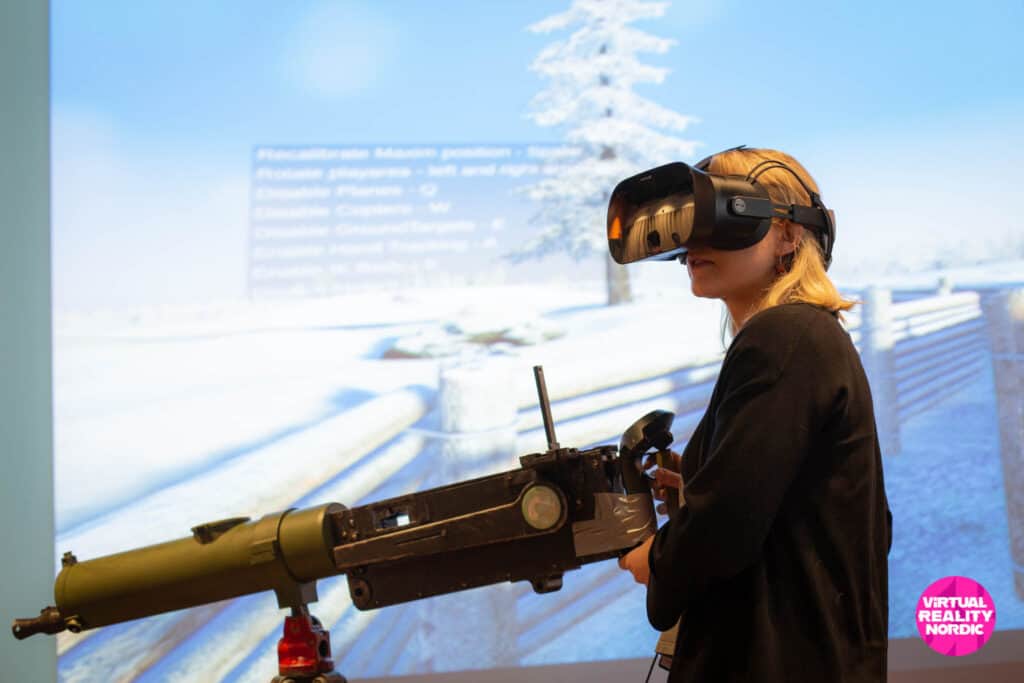
After a networking break, Pekka Ouli from the vocational school of North Central Finlandtook the stage. He told the audience about advanced digital learning environments and how virtual reality enables completely new dimensions in learning. After Ouli, the stage was taken over by Jonas Rajanto (Grape People Finland). Rajanto gave an in-depth presentation on the benefits of VR technology for distance learning. Remote virtual meetings are similar to face-to-face meetings. Among other things, they make it easier to assess the emotional states of the participants and thus lead to more genuine interaction. The highlight of Rajanto's presentation was definitely the live demo, in which he was joined by a few brave visitors to the event. The demo was a great demonstration of how the virtual meeting increased the cohesion and focus of the participants on the topic at hand.
After a rich buffet lunch and networking, the programme continued in the Aurora hall. Tommi Teronen from Teatime Research gave a presentation on solutions for the cultural and entertainment sector. Iikka Finning from Nokia explained how they use VR technology in research and Orkun Ceylan from 3D Talo presented a VR solution in use at Ponsse. Before the second keynote speaker of the day, Jani Kaipainen, founder of MeKiwi, speculated on the future of artificial intelligence with its opportunities and threats. In the afternoon, there was also the opportunity to participate in workshops organised by Oulu University of Applied Sciences in connection with the VIRTU project. The workshops explored Teatime Research's immersive cultural experiences and Glue's virtual reality platform that allows users to collaborate remotely.
Addressing future challenges
The final speaker of the day before the panel discussion was the second keynote speaker of the event, who many in the audience had specifically gathered to listen to. Steven LaValle from the University of Oulu, a pioneer in virtual reality and robotics, did not disappoint this time either. He summed up the essentials nicely. LaValle sees the key to success as a constant desire to learn and the ability to accept critical feedback. Solving the challenges of the future requires cooperation. Bold testing of ideas and openness will take us step by step forward, LaValle concluded. The Virtual Reality Nordic event ended with an interesting panel discussion, led by the usual moderator, Karvinen. The panel included Kim Härkönen from Varjo, Begum Dogan from MeKiwi, Natasha Skult from MiTale and Steven LaValle from the University of Oulu.
The wonderful day included a wealth of VR-related case studies from the business world. Visitors also had the opportunity to try out the latest VR solutions in the form of demos provided by exhibitors. The day also included interesting workshops to solve practical challenges using virtual reality.
The presentations at the event showed that VR technology has come a long way and the use cases have diversified. It is clear thatvirtual reality is here to stay. It continues to grow in popularity and there is no reason to doubt that it will continue to grow as technology advances and the price of virtual glasses falls. Virtual Reality Nordic 2020 demonstrated with practical examples how VR technology brings many benefits as a design tool, an educational environment, a marketing enabler and an enabler of remote viewing.
The virtual reality game Cave Digger is released on Steam and the Oculus Store
Press release 7.5.2018
The launch event for Cave Digger will take place on 9 May at VR_Heaven, Oulu's first VR arcade. The game will be released just after midnight on 10 May.
The game is set in a small Wild West village saloon in an alternate universe. In the background, a newsreader plays the game over the radio as the player, the main character, begins their journey from the mysterious saloon. They grab their pickaxe and takes the lift down to the mine shaft. By digging minerals and other treasures from the walls of the pit, the miner can collect money and use it to upgrade tools. Beneath the layers of stone, there are many secrets for the player to discover and experience.
We are very excited about the release of our first game and we strongly believe that this is just the start of something big. Cave Digger has already received a lot of good feedback. We can't wait to see what happens next!" says Begüm Doğan, Marketing Manager at VRKiwi.
Jani Huhtamella, CEO of VR_Heaven also says about the event, "It's great to be involved in making Finnish and Oulu gaming history together with VRKiwi. Events like this show that Oulu has the know-how to share with others. Oulu now also demonstrably has the know-how that makes it possible to use virtual reality in a variety of ways. This opens up a whole new market for the city. Call Oulu and order VR softwares, simple."
The game is designed to fit both living rooms and VR gaming rooms. The game rounds are short, so it's easy to change players in between and enjoy the game with friends. Gear yourself and experience the depths of the abyss!
Trailer: https://www.youtube.com/watch?v=HF5qK0lTZ_U
Steam Store page: https://store.steampowered.com/app/844380/Cave_Digger/
Developer: MeKiwi
Publisher: MeKiwi
Genre: Action, indie, virtual reality
Release date: 10th May 2018
Price: Free
Homepage: https://vrkiwi.org/
Facebook: https://www.facebook.com/cavediggergame/
Twitter: https://twitter.com/vr_kiwi
More info about VRKiwi:
VRKiwi is part of MeKiwi, a full-stack digital agency based in Oulu. MeKiwi produces games for VR platforms, mobile and web. Services also include software production, graphic design and digital marketing. The number of employees is 15.
More info:
In English:
In Finnish:
AI as a sparring partner for managers
A game developed to train managers using artificial intelligence acts as a personalised sparring tool, explaining the impact of their choices and giving advice on where to improve. As a result, well-being at work improves and staff productivity increases - both in the game and at the workplace.
The discussion around AI often focuses on situations where it replaces human work. However, AI can also help people advance in what will remain an area of human interaction - leadership.
The project is the next phase of the Productive Manager training simulation, developed to coach managers and HR staff. SOL and Antell, among others, are already users of the game and will also be pioneers in introducing the future AI-based version of it.
Improved quality of working life - improved staff productivity
Problems undermine the quality of work life. Good management practices improve it. This is something that creates issues in day-to-day management. The Productive Manager learning game provides real-life management problems. The choices you make will either improve or reduce the quality of your working life.
In the Productive Manager simulation, progress is based on the values calculated by the game; the Quality of Working Life (QWL) index and the motivation theory linked to it.
"It is the focus on motivation that makes the simulation so accurate. Combining motivation theory with QWL's calculations is an essential factor in being able to build such a game," explains Marko Kesti, CEO of PlayGain Oy, the company behind the game and an associate professor at the University of Lapland, whose long-term research has resulted in the well-being and productivity metrics that form the basis of the game.
Leadership has a direct impact on well-being at work, which in turn has a direct link to staff productivity. The human resource productivity function is also a theory developed by Marko Kesti and recognised by the international scientific community, which allows Productive Managers to measure player development. This allows the game to show the player the impact of their choices not only on staff well-being, but also on financial performance.
Through the development of a manager's skills, improved performance in the game leads to improved performance in the organisation.
AI as a personal sparring partner for managers
Productive Manager has been implemented in the first user companies for about a year. In addition to the original research data, there is now available data on players and on the development of Quality of Work Life (QWL) in companies using the Productive Manager simulation.
Now, AI has been used to create predictive analytics in the training simulation, which takes into account not only job quality and motivation, but also the player's personal profile. A manager does their job with their own personal touch. What works for one may not work for another.
Using the data generated during the game, the AI becomes the manager's personal sparring partner.
"The AI built into the game already takes into account the player's personal strengths and areas for improvement, and provides customised help, for example by suggesting learning more about a topic. In the future, this support will only become more accurate as the amount of data grows," says Marko Kesti.
Predictive analytics can help prevent issues
What is AI in this context and what do we do with it?
"To put it simply, since the Quality of Work Life Wellbeing function and the Productivity of Work Life Wellbeing function are formulas that are calculated from variables in the work environment, this calculation would simply be converted into a software that calculates the same results from the same variables that the player encounters in different game situations," explains Jaakko Asikainen, CTO of MeKiwi, who led the development of the game technology.
"As such, a computer program would still not be a simulation, but it has an architecture and dynamics built into it based on game theory, which motivates and guides the player and at the same time creates learning," Asikainen continues. "Productive Manager is unique because it has a game architecture that matches reality."
Gaming collects more data, allowing the AI to make better and better predictions. This is the biggest benefit of AI for users. When an important area for leadership improvement emerges during the game, the problem may not arise at all.
Company news!
The period between autumn rains and winter storms is a good time to be in the office. We have been working hard as a team. Read here. what's so interesting going on now. You can also enter the competition!
Virtual reality game takes gold and riches underground
The most fun we've had this autumn has definitely been a collaboration project with game studio Happy Hobgoblinand game marketing agency Kuvion. A new VR game, Cave Digger Riches, takes you deep underground in search of gemstones and other valuable minerals. The western feel of the game is mixed with an appropriate amount of sci-fi in the form of laser cutters, scanners and other tools.
The first tests have already taken place at the Tietomaa Science Centre. The development of the game is part of the EduDigi project, which is why a number of teachers were there to test it. A different school day for them too!
A demo version of Cave Digger Riches will be released in spring 2018. Before that, the game's website and social media channels will be launched. We'll keep you informed about the progress of the project along the way. Stay tuned for more!
Well-being at work pays off
PlayGain's Productive Manager simulation is based on scientific research that proves that increased well-being at work also improves productivity at work. Constant change and problems demand professionalism from managers. Investing in skills pays off, as good leadership enables a significant improvement in competitiveness. To find out how, you can explore and learn by playing the Productive Manager game. By playing, you can see the impact of your choices on well-being and productivity at work. The game provides information and feedback on your skills.
A manager's success at work becomes apparent slowly and quietly, without making a fuss of themselves. Now you can also gain individual fame and glory by playing!
Now PlayGain has announced the Best LEAN Manager in Finland competition. The competition is free and open to all. You don't have to be a manager to enter the competition. During the competition period, you can play Productive Manager online for free. Let's see how you would do in a test environment.
The competition is open until 1.12.2017. The best players will be rewarded!
Best LEAN Manager in Finland competition
Service vouchers give a boost to your business start-up
Business Oulu again offers significant support to start-ups. A service voucher worth €1000-5000 is a great way to get a service or product off the ground.
MeKiwi is also a service provider of the Business Oulu Service Voucher. The first voucher customers are already being assisted. Interesting things are coming up there too!
Read more about MeKiwi's voucher services in our blog.
At the same time, website, mobile development and all aspects of the digital world will continue as before. Whatever is on your mind, it's worth a call! Let's get some coffee brewing and sit down.
Have a very good autumn - stay tuned!
Jani Kaipainen & Kiwi team
The Service Voucher gives support to a start-up business
The Business Oulu Service Voucher provides the necessary support for a start-up business. A voucher worth €1000-5000 is already a great boost for the commercialisation of a service or product.
In the first phase, businesses that have been operating for less than one year can apply for a business service voucher. In the next phase, the business service voucher will be extended to businesses that have been operating for less than 5 years.
The service voucher can be used to buy expert services from another company to help your business grow. The company must be a registered service provider.
This is a major boost to the commercialisation of a service or product.
MeKiwi is a service provider of the Business Oulu Service Voucher.
We offer six key services to help young companies develop their business.
The services are worth between 4000€ and 5000€.
1 Mobile app design
Designing a mobile app starts with understanding what you need it for. Is it used by the company's employees or customers? Or does the app act as a channel to connect different parties?
Our team of experts will start from these points to integrate the application into your business. A well designed mobile app drives action towards your goals.
Designing a mobile application that supports your business includes:
1. Background and user research
Determine the user needs by interviewing the target audience.
2. Building scenarios for the product.
Why, where and in which situations is the mobile app used? We consider the technological limitations: what solutions can be done - and what makes sense.
3. User interface drafts.
What could the mobile app look like? How does the app support your brand?
If the mobile app is aimed at the market, we also look at how much it could cost and what kind of monetisation model it could follow. Would your product be scalable to other markets, or suitable for other purposes? On this basis, your mobile app becomes a demo that you can use when applying for funding to enter international markets, for example.
2 Business planning for a digital environment
Digital tools make things easier. Why make it difficult when you can make it easy? In our service package, we plan how you can make your business more efficient by using digital services. Let's find the right digital tools for your business.
You know what you want to achieve. We'll find the things that cause issues. We tell you what, where and how you could do things more smoothly with digital solutions.
3 Planning international business in a digital environment
Digital platforms enable the production and distribution of services worldwide. As part of the service package, we plan how you can expand internationally - or enhance your existing operations there.
We help you find the right digital tools for your business, analyse your business image in an international environment and the scalability of your product in your target market.
One way in which a start-up company can particularly benefit from this service is by commissioning a prototype or demo. A prototype or demo is needed when applying for a funding to export your product.
4 Developing and exploiting VR and AR innovations in business.
Virtual reality (VR) and augmented reality (AR) deliver information in a completely different way than any previous technology.
Both can be used to play, either for recreational or educational purposes. All kinds of spatial and informational displays also work very well in VR and AR environments.
Working in a virtual environment is always about experience and emotion. This helps learning and remembering.
There is no need to teach a user to play virtually - with prices coming down, virtual glasses are already widely adopted by consumers.
As technology becomes more widespread, customised solutions are possible for more people. We can map the content of the service according to your needs. As an example, here is the conceptualisation of a virtual reality educational game in a nutshell:
1. Background and user research
Determine the user needs by interviewing the target audience.
2. Building scenarios for the product.
Why, where and in which situations would the game be used? We consider the technological limitations: what solutions can be done - and what makes sense.
3. User interface drafts.
Read more about the possibilities of the virtual world here. These are just examples - new ways to use the VR platform are being invented all the time. Maybe for you too!
5 Game testing
We test VR and mobile games on target audiences. We collect user experiences and ideas for further development in a report. We can use Oulu’s Tietomaa Science Centre as a testing environment, which is particularly useful when we need to test the game with a large number of users.
6 Concept design for a gamified service/tool
The game offers a way to improve customer satisfaction, build relationships and stay in touch with the customer. Gamification starts with getting to know the customer. What does the customer want and need, and what kind of action will they agree to? The starting point for gamification is a need – something you want to promote. Gamification can be used to support, guide, motivate or engage the user.
A gamified service does not have to look like a game. Game features are targeted to appropriate areas within the service.
The number one priority is the user experience. This includes the activity of the user, the responsiveness of the application, the structure of the application, its appearance and also the sound. Simplicity and efficiency are the key words here.
Designing a gamified service:
1. Background and user research
Determine the user needs by interviewing the target audience.
2. Building scenarios for the product.
We look at why, where and in what situations the mobile app is used. We consider the technological limitations: what solutions can be done - and what makes sense.
3. User interface drafts.
Whatever your needs, you can be sure that doing something like this will take you a long way. Click on the Business Service Voucher service catalogue here. There you will also find MeKiwi's services. There you go!






